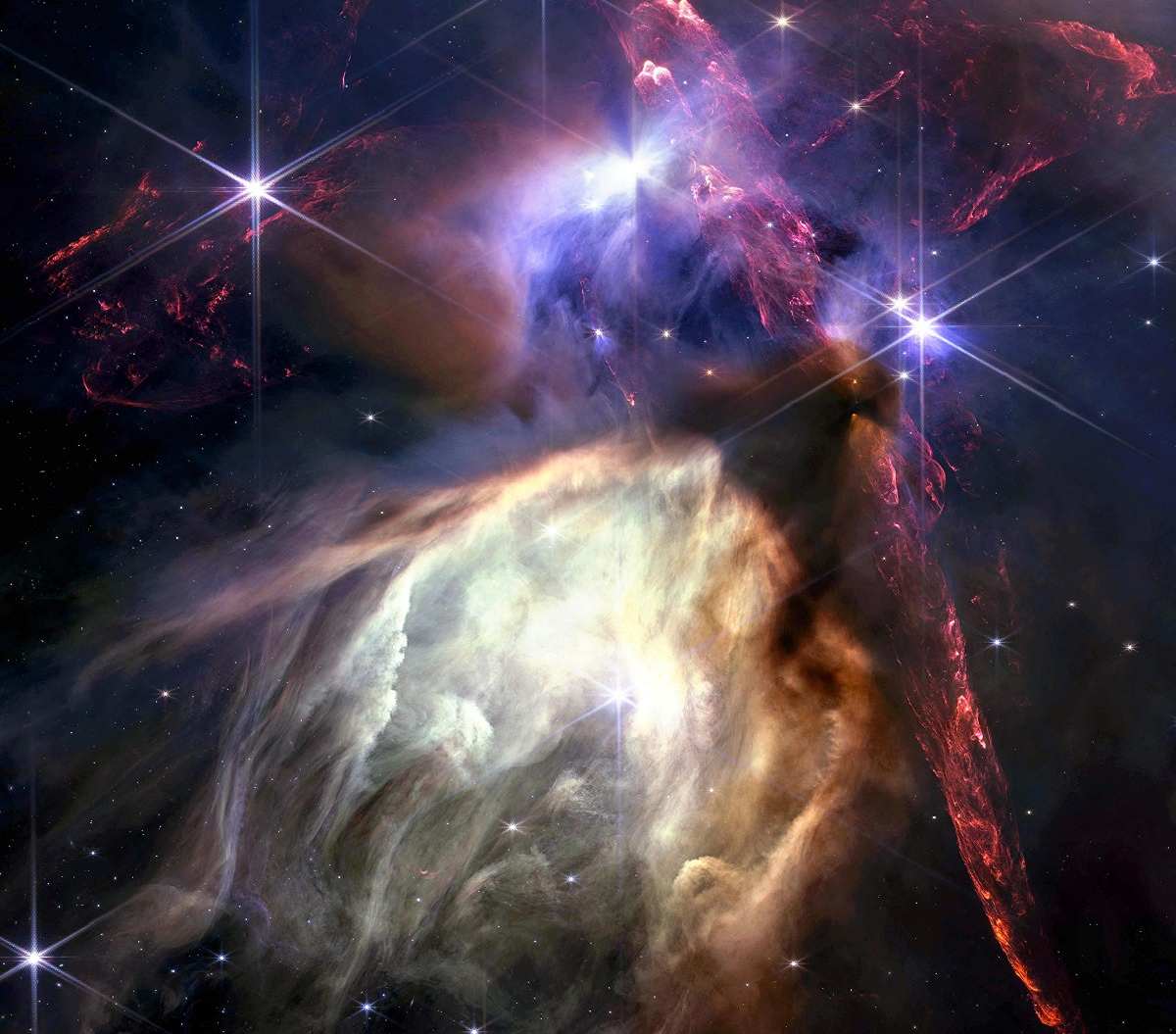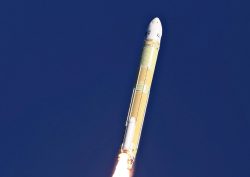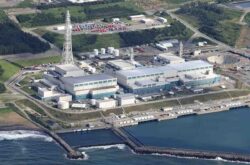
A small star-forming region in the Rho Ophiuchi cloud complex, the closest star-forming region to Earth, is seen in this handout image captured by the James Webb telescope and obtained on July 12.
15:38 JST, July 21, 2023
WASHINGTON (AFP-Jiji) — Jets of red gas bursting into the cosmos, and a glowing cave of dust: NASA marked a year of discovery by the James Webb Space Telescope July 12 with a spectacular new image of Sun-like stars being born.
The picture is of the Rho Ophiuchi cloud complex, the nearest stellar nursery to Earth, whose proximity at 390 light-years allows for a crisp close-up by the most powerful orbital observatory ever built.
“In just one year, the James Webb Space Telescope has transformed humanity’s view of the cosmos, peering into dust clouds and seeing light from faraway corners of the universe for the very first time,” said NASA Administrator Bill Nelson.
“Every new image is a new discovery, empowering scientists around the globe to ask and answer questions they once could never dream of.”
Webb’s image shows around 50 young stars, of similar mass to our Sun or smaller.
Some have the signature shadows of circumstellar disks — a sign that planets may eventually form around them.
Huge jets of hydrogen appear horizontally in the upper third of the image, and vertically on the right.
“These occur when a star first bursts through its natal envelope of cosmic dust, shooting out a pair of opposing jets into space like a newborn first stretching her arms out into the world,” the U.S. space agency said in a statement.
“At the bottom of the image, you can see a young star that’s energetic enough that it’s blowing a bubble in the cloud of dust and gas from which it was born,” Christine Chen, an astronomer at the Space Telescope Science Institute, which operates Webb, told AFP.
It does so through a combination of its light and a stellar wind linked to it, she added.
Interstellar space is filled with gas and dust, which in turn serves as the raw material for new stars and planets.
“Webb’s image of Rho Ophiuchi allows us to witness a very brief period in the stellar life cycle with new clarity. Our own sun experienced a phase like this, long ago, and now we have the technology to see the beginning of another star’s story,” said Webb project scientist Klaus Pontoppidan.
New era of astronomy
Webb was launched in December 2021 from French Guiana, on a 1.5 million kilometer voyage to a region called the second Lagrange point.
Its first full color picture was revealed by U.S. President Joe Biden on July 11, 2022: the clearest view yet of the early universe, going back 13 billion years.
The next wave included “mountains” and “valleys” of a star-forming region, dubbed the Cosmic Cliffs, in the Carina Nebula; and a grouping of five galaxies bound in a celestial dance, called Stephan’s Quintet.
Webb boasts a primary mirror measuring more than 6.5 meters that is made up of 18 hexagonal, gold-coated segments, as well as a five-layer sunshield the size of a tennis court.
Unlike its predecessor Hubble, it operates primarily in the infrared spectrum, allowing it to look back nearer toward the start of time, and to better penetrate dust clouds where stars and planetary systems are being formed today.
Key discoveries include some of the earliest galaxies formed a few hundred million years after the Big Bang, identifying at unprecedented resolution the atmospheric compositions of planets outside our solar system, and, in our own neck of the woods, stunning new views of the planet Jupiter.
Webb has enough fuel for a 20-year mission, promising a new era of astronomy.
It will soon be joined in orbit by Europe’s Euclid space telescope, which launched on July 1 on a mission to shed light on two of the universe’s greatest mysteries: dark energy and dark matter.
"Science & Nature" POPULAR ARTICLE
-

Genome Study Reveals Milestone in History of Cat Domestication
-

Big Leap in Quest to Get to Bottom of Climate Ice Mystery
-

Security Camera Footage Vulnerable to Outside Access; Investigation Finds 3,000 Pieces Exposed Online
-

Japan Set to Participate in EU’s R&D Framework, Aims to Boost Cooperation in Tech, Energy
-

Paws on Parade: Nairobi’s Dogs Dazzle at ‘Pawchella’
JN ACCESS RANKING
-

Tokyo Economic Security Forum to Hold Inaugural Meeting Amid Tense Global Environment
-

Keidanren Chairman Yoshinobu Tsutsui Visits Kashiwazaki-Kariwa Nuclear Power Plant; Inspects New Emergency Safety System
-

Imports of Rare Earths from China Facing Delays, May Be Caused by Deterioration of Japan-China Relations
-

University of Tokyo Professor Discusses Japanese Economic Security in Interview Ahead of Forum
-

Japan Pulls out of Vietnam Nuclear Project, Complicating Hanoi’s Power Plans


























